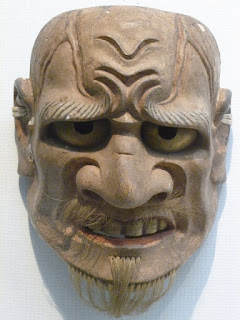Why Should I?
One of the things that mystifies beginners in Aikido is ukemi. It maybe easy to understand the idea of the attack and the technique. Yet, for most people, the proper response of the uke does not come naturally. Ukemi is probably the most difficult part of Aikido. As Henry Kono Sensei once said, "Ukemi is the essence of Aikido. If you know how to take ukemi, throwing is easy." Kono Sensei said he spent three whole years of his four years in Japan to learn ukemi so that he finally got to practice with O Sensei.
"What am I supposed to do?" At the beginning, students are taught to just move along so that they do not get hurt. With time, some of us learn to understand the value and the meaning of ukemi. Yet, many people continue to resist taking ukemi because of a lack of appreciation for the art and its significance.
"Am I supposed to just fall down for my partner? I know what they are going to do. They can't move me. Why should I help them?" This kind of ukes tends to half-heartedly launch a not very effective attack and then refuses to move. Sadly, people who exhibit this kind of behavior tend to be smug and competitive, but have absolutely no idea about how Aikido actually works.
Recently, we had the opportunity to explain to some newer students about ukemi.
To begin with, even though you have watched the demonstration and know "how the story is supposed to end", you try to continue to act as if you do not know because anticipation is a very dangerous thing. Just in case your partner does something different, you will not be able to react.
To learn Aikido, you learn to live in the moment. Every encounter is unique like a snow flake. It only exists for the moment and it expires in no time. It is, therefore, important that you do not dwell on what happened in the last round, and do not speculate on what might happen next. Face what is in front of you right this instant and deal with it the best you can. To be able to blend with your partner promptly is what keeps you alive. That is why moving along is the best way to protect oneself. It is self-preservation. You are doing nobody else a favor. In addition, if you do not learn to take ukemi by blending with your partner, you will never get to the center of the movement where the possibility for reversal lies.
It is not uncommon that, after a few repetitions, people start getting into a rut. They have become so familiar with the "script" that they know each others' "lines". As a result, instead of hitting their partner at where the partner is this moment, they start hitting to where they think their partner is going to be next. Some call it "tracking". I think it should be called "cheating". It is no different from "insider dealing" -- you seek to get a competitive edge based on secret information about what is going to happen. It is not supposed to happen in real life.
Tracking can be a problem because students do not live and act in the moment. Imagine: once the uke starts tracking with his attacks, the nage will figure out and starts adjusting. Once the uke realizes the nage has changed his moves, the uke will track according to the new routine. And then the nage adjusts again, and the uke tracks some more . . . . The practice falls apart. There is no way we all practice cooperatively the same thing together anymore. It turns into a competitive downward spiral that tears the class apart.
Aikido is a diorama of life. There is no before and there is no after. All you have is now. Be in the moment. Give a sincere and truthful attack. You either attack or you don't. There is no holding back. There is no crystal ball in real life. Courageously go through the center and try to exit alive from the other side because there is not any other way.
More on ukemi:
[The Aikido Surfer]
[Resistance is Futile]
"What am I supposed to do?" At the beginning, students are taught to just move along so that they do not get hurt. With time, some of us learn to understand the value and the meaning of ukemi. Yet, many people continue to resist taking ukemi because of a lack of appreciation for the art and its significance.
"Am I supposed to just fall down for my partner? I know what they are going to do. They can't move me. Why should I help them?" This kind of ukes tends to half-heartedly launch a not very effective attack and then refuses to move. Sadly, people who exhibit this kind of behavior tend to be smug and competitive, but have absolutely no idea about how Aikido actually works.
Recently, we had the opportunity to explain to some newer students about ukemi.
To begin with, even though you have watched the demonstration and know "how the story is supposed to end", you try to continue to act as if you do not know because anticipation is a very dangerous thing. Just in case your partner does something different, you will not be able to react.
To learn Aikido, you learn to live in the moment. Every encounter is unique like a snow flake. It only exists for the moment and it expires in no time. It is, therefore, important that you do not dwell on what happened in the last round, and do not speculate on what might happen next. Face what is in front of you right this instant and deal with it the best you can. To be able to blend with your partner promptly is what keeps you alive. That is why moving along is the best way to protect oneself. It is self-preservation. You are doing nobody else a favor. In addition, if you do not learn to take ukemi by blending with your partner, you will never get to the center of the movement where the possibility for reversal lies.
It is not uncommon that, after a few repetitions, people start getting into a rut. They have become so familiar with the "script" that they know each others' "lines". As a result, instead of hitting their partner at where the partner is this moment, they start hitting to where they think their partner is going to be next. Some call it "tracking". I think it should be called "cheating". It is no different from "insider dealing" -- you seek to get a competitive edge based on secret information about what is going to happen. It is not supposed to happen in real life.
Tracking can be a problem because students do not live and act in the moment. Imagine: once the uke starts tracking with his attacks, the nage will figure out and starts adjusting. Once the uke realizes the nage has changed his moves, the uke will track according to the new routine. And then the nage adjusts again, and the uke tracks some more . . . . The practice falls apart. There is no way we all practice cooperatively the same thing together anymore. It turns into a competitive downward spiral that tears the class apart.
Aikido is a diorama of life. There is no before and there is no after. All you have is now. Be in the moment. Give a sincere and truthful attack. You either attack or you don't. There is no holding back. There is no crystal ball in real life. Courageously go through the center and try to exit alive from the other side because there is not any other way.
More on ukemi:
[The Aikido Surfer]
[Resistance is Futile]



Comments
Post a Comment